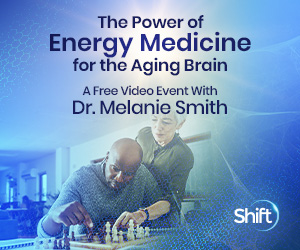Contributing writer for Wake Up World
Many have been misled to believe that vaping is far healthier than cigarette smoking, but nothing could be further from the truth. As noted in one scientific review,1 e-cigs may be a safer option than conventional cigarettes, but they’re “not that safe.” Chemical analyses have found e-cigarette liquids, aerosols, cartridge, and the heating coils within the e-cig tank can contain many toxic ingredients, including:2,3,4
| Antifreeze chemicals such as propylene glycol and diethylene glycol, the latter of which has been linked to cancer5 |
| Volatile organic compounds (VOCs), associated with throat irritation, headaches, liver, kidney and central nervous system damage, and, potentially, cancer6 |
| 2-chlorophenol, which is classified as “harmful if inhaled”7 |
| Nitrosamines, which have been linked to cancer, Non-Hodgkin lymphoma, Alzheimer’s and Parkinson’s disease, fatty liver disease and DNA damage8 |
| Polycyclic aromatic hydrocarbons, which has been linked to cancer, cataracts and damage of the liver and kidneys9 |
| Radioactive polonium-210, a recognized carcinogen |
E-cigs also contain toxic metals and metalloids, including lead, chromium, nickel, manganese, aluminum, antimony, arsenic, cadmium, cobalt, copper, iron, selenium, tin and zinc.10,11
In one test,12 nearly half the vapor samples were found to have lead concentrations above the limits set by the U.S. Environmental Protection Agency. As noted by the researchers, the heating coils are made of nickel, chromium and several other metals, making this the most obvious source of contamination. However, the source of the lead remains a mystery. Arsenic was also detected in 10 of the 56 devices tested.
Toxic Degradation Products
When heated, the chemicals in e-liquids also produce a variety of toxic degradation products, including aldehydes such as:13
- Acrolein, used as a chemical weapon during World War I and later as an herbicide
- Formaldehyde (embalming fluid)
- Acetaldehyde, a carcinogen. It’s thought to contribute to cancer by damaging your DNA and preventing DNA repair14
A study commissioned by Japan’s Health Ministry found both acetaldehyde and formaldehyde in the vapor produced by several types of e-cig devices,15 and at least one brand had more than 10 times the level of carcinogens found in a traditional cigarette.
The Clean Air Act of 1990 defines formaldehyde and acrolein as hazardous air pollutants subject to regulation by the Environmental Protection Agency. As noted by the EPA:16
“At concentrations exceeding usual outdoor levels, aldehyde inhalation can alter breathing patterns by narrowing airway openings (airway constriction). It can also damage cells lining the airways, prompting white blood cells to enter the lungs.”
E-cigarette aerosols also contain organic byproducts such as carbonyls, carbon monoxide and free radicals, albeit at lower concentrations than tobacco smoke.17 The U.S. Food and Drug Administration has noted that second-hand smoke or vapor from e-cigs may contain at least 10 chemicals that are on California’s proposition 65 list of reproductive toxins and carcinogens.18 So, vaping does not mean you’re not exposing others to toxic second-hand smoke.
Polonium Is the Main Reason Cigarette Smoking Causes Cancer
Polonium-210 is often found in traditional tobacco products19 because tobacco plants absorb it (as well as other radioactive materials) from the soil. High-phosphate fertilizer used on tobacco crops also contains it and adds to the plants’ uptake.
While cigarette smoke contains a wide variety of toxins, the presence of polonium appears to be one of the primary reasons why cigarette smoking causes lung cancer. The fact that polonium-210 is also found in e-cigarettes raises the very definite possibility, then, that they too may cause lung cancer.
As explained in a 2022 analysis of the polonium-210 content of conventional cigarette smoke and the IQOS Heets cigarette (an electronic smoking device that uses real tobacco rather than an e-liquid):20
“Polonium-210 (210Po) and lead-210 (210Pb) are natural radionuclides of the uranium (238U) decay series, which are present within and on the surface of tobacco leaves.
A large part of the 210Po and 210Pb activity in tobacco originates from the capture of radon-222 (222Rn) progeny aerosols by the trichomes of leaves, whilst a smaller part originates from root transfer.
Owing to the significant volatility of Po and Pb in aerosol particles, both radionuclides are present in mainstream cigarette smoke, 210Po, as an energetic ?-particle emitter, has readily been recognized as a potential carcinogenic component of the tobacco smoke.
As early as 1964, Radford and Hunt hypothesized that the presence of 210Po in tobacco smoke, and its preferential localization in the bronchial epithelium, would be a cause of lung cancer … 210Po in tobacco smoke commits an effective radiation dose to the lung, which could be close to the annual dose limit of 1 mSv for heavy smokers.”
Flavor Chemicals Are Largely a Mystery
As noted in an August 10, 2023, Conversation article,21 it’s extremely difficult to assess the health risks of vaping for the fact that there are so many different devices and e-liquids on the market. Chemicals can also behave differently when heated and can have synergistic effects with other chemicals.
Contamination issues also complicate matters. For example, a 2019 study22,23 found 27% of the 75 single-use and refillable vaping cartridges tested contained microbial agents and 81% contained glucan, a substance found in the cell walls of most fungi.
Exposure to these impurities has been associated with asthma, chronic obstructive lung disease, reduced lung function and inflammation of the lungs. They also found endotoxin, and concentrations were higher in fruit-flavored products, suggesting raw materials used in production may be the source of contamination.
Flavors can contain more than 35 different chemicals,24 none of which is listed on the label, and they too may have toxic interactions with each other. Many of the health hazards associated with vaping appear to be related to flavor chemicals in particular, and “fun” flavors is what’s attracting many children and teens to take up the habit. The Conversation reports:25
“One example is benzaldehyde (an almond flavoring). When this is inhaled, it impairs the immune function of lung cells. This could potentially reduce a vaper’s ability to deal with other inhaled toxins, or respiratory infections.
Benzaldehyde is one of only eight banned e-liquid ingredients in Australia. The list is so short because we don’t have enough information on the health effects if inhaled of other flavoring chemicals, and their interactions with other e-liquid ingredients.”
Illegal Vaping Products Are Flooding the Market
In January 2020, the FDA finalized its enforcement policy on unauthorized flavored cartridge-based e-cigs that appeal to children. In a press announcement,26 the agency warned that companies must immediately cease manufacture, distribution and sale of all flavored cartridge-based e-cigarettes, with the exception of tobacco flavor and menthol.
As of August 8, 2016, all cartridge-based e-cigarette products are required to apply for and receive premarket authorization from the FDA’s tobacco authority.27 Since then, the FDA has received some 26 million applications,28 a volume the agency simply hasn’t been able to handle.
As a result, illegal products have flooded the market. Many manufacturers never even bother to apply for authorization. They simply cash in for as long as they can. What’s more, since the FDA’s policy only applies to cartridge-based vaping products, sale of disposable products, which were foolishly exempted from the flavor ban, have skyrocketed by 1,500% since early 2020 alone.29
According to the FDA, it has rejected all but 23 premarket review applications received so far, and all the approved products were for traditional tobacco flavors intended for adult smokers.30
To rein in the rise of illegal vaping products, the FDA also recently ramped up its enforcement efforts, issuing warning letters to 1,500 manufacturers and 120,000 retailers for selling illegal products or selling to customers under 21.31 It also fined a dozen e-cig manufacturers around $19,000 each,32 and ordered an import ban on three disposable brands (Elf Bar, Esco Bar and Breeze).33
In October 2022, the Justice Department also launched lawsuits against half a dozen e-cig manufacturers on the FDA’s behalf.34 Still, the three import brands banned and the six manufacturers sued are but a drop in the bucket, as there are hundreds of brands selling unauthorized/illegal products.Tobacco-and-Menthol-Flavored E-cigs Aren’t Safe Either
It’s important to recognize that just because tobacco-and-menthol-flavored e-cigs are excluded from the FDA’s ban, that doesn’t mean they’re “safe.” The ban on flavored e-cigs has more to do with curbing vaping among children and teens than it has with safety.
According to a 2017 study35 published in the Environmental Health journal, which assessed the contents of aerosols from tobacco- and menthol-flavored e-cigs, these flavors contained several toxic compounds, including nicotine, fine particles, nanoparticles, carbonyls, and VOCs such as benzene and toluene.
Vaping Associated With Serious Health Risks
According to a 2021 scientific review, the harmful effects of vaping include:36
•Respiratory complications resulting from:
?Respiratory irritation and abnormalities in respiratory function
?Lung edema
?Airway epithelial injury and lung injury
?Sustained tissue hypoxia
•Cardiovascular health risks, resulting from:
| Cytotoxicity | Oxidative stress | Increased inflammatory markers |
| Impaired endothelial function | Increased platelet aggregation | Increased arterial stiffness |
One of the largest studies conducted on the health effects of vaping, presented at the 2019 American College of Cardiology’s Annual Scientific Session,37 found that adult e-cig smokers have a significantly higher chance of heart disease and mental health problems than nonsmokers, even after controlling for known risk factors such as body mass index and high blood pressure. Compared to nonsmokers, vapers were:
- 34% more likely to have a heart attack
- 25% more likely to have coronary artery disease
- 55% more likely to suffer from depression or anxiety than nonsmokers with the same risk factors
How to Make Quitting Smoking Easier
Whether you’re smoking combustible cigarettes or e-cigs, please consider quitting. I believe the “secret” to quitting smoking is to work on other aspects of your health first, which will make quitting mentally and physically easier.
Exercise, for example, is an important part of this plan. Research has shown that people who engage in regular strength training double their success rate at quitting smoking compared to those who don’t exercise.38 Healthy eating is another crucial factor to improving your health and strengthening your ability to quit. In short, if you want to quit, here are three basic tips to get started:
•Eat real food — Detailed guidance can be found in my free comprehensive nutrition plan.
•Develop a well-rounded exercise regimen — This is your ally to fighting disease and to quitting smoking. Strength training is an important part, but also remember to incorporate high-intensity interval exercises, core-strengthening exercises, stretching and regular non-exercise movement like walking, along with cutting back on sitting.
•Find a healthy emotional outlet — Many use exercise, meditation or relaxation techniques for this, and these are all great. I also recommend incorporating Emotional Freedom Techniques (EFT). This can help clear out emotional blockages from your system (some of which you might not even realize are there), thus restoring your mind and body’s balance and helping you break the addiction and avoid cravings.
Once you are regularly doing these three things, then you can begin to think about quitting smoking. At this point many are ready to try quitting “cold turkey.” And, again, if you’re a parent, talk with your children about the risks of smoking, smokeless tobacco and e-cigarettes. The easiest path to not smoking is to avoid starting in the first place.
References:
- 1, 36 Respiratory Research 2021; 22 Article number 151
- 2, 13, 21, 24, 25 The Conversation August 10, 2023
- 3, 35 Environmental Health April 27, 2017; 16 Article number 42
- 4 Chemical Research in Toxicology 2020; 33(9): 2374-2380
- 5 CNN, February 26, 2018
- 6 EPA VOCs
- 7 Pubchem 2-chlorophenol
- 8 Naturalpedia Nitrosamines
- 9 Cancer in Illinois, PAH Fact Sheet
- 10 Environmental Health Perspectives March 18, 2020; 128: 3
- 11 Environmental Health Perspectives, 2018;126(2):027010
- 12 Johns Hopkins Bloomberg School of Public Health, February 21, 2018
- 14 CDC Acetaldehyde
- 15 The Guardian, November 28, 2014
- 16 EPA Inhalation of Aldehydes and Effects on Breathing
- 17 Toxics 2022; 10(12): 714
- 18 American Nonsmokers Rights Foundation, Electronic Cigarettes and Secondhand Aerosol
- 19, 20 Scientific Reports 2022; 12: 10314
- 22 Environmental Health Perspectives, April 24, 2019; doi: 10.1289/EHP3469
- 23 EurekAlert! April 24, 2019
- 26, 27 FDA January 2, 2020
- 28, 30 FDA March 15, 2023
- 29, 33 Boston.com June 27, 2023
- 31, 32, 34 KFF Health News June 26, 2023
- 37 EurekAlert! March 7, 2019
- 38 Nicotine and Tobacco Research, 2011, 13(8), 756-760
About the author:
Born and raised in the inner city of Chicago, IL, Dr. Joseph Mercola is an osteopathic physician trained in both traditional and natural medicine. Board-certified in family medicine, Dr. Mercola served as the chairman of the family medicine department at St. Alexius Medical Center for five years, and in 2012 was granted fellowship status by the American College of Nutrition (ACN).
While in practice in the late 80s, Dr. Mercola realized the drugs he was prescribing to chronically ill patients were not working. By the early 90s, he began exploring the world of natural medicine, and soon changed the way he practiced medicine.
In 1997 Dr. Mercola founded Mercola.com, which is now routinely among the top 10 health sites on the internet. His passion is to transform the traditional medical paradigm in the United States. “The existing medical establishment is responsible for killing and permanently injuring millions of Americans… You want practical health solutions without the hype, and that’s what I offer.”
Visit Mercola.com for more information, or read Dr. Mercola’s full bio and resumé here.

If you've ever found value in our articles, we'd greatly appreciate your support by purchasing Mindful Meditation Techniques for Kids - A Practical Guide for Adults to Empower Kids with the Gift of Inner Peace and Resilience for Life.
In the spirit of mindfulness, we encourage you to choose the paperback version. Delve into its pages away from screen glare and notifications, allowing yourself to fully immerse in the transformative practices within. The physical book enriches the learning process and serves as a tangible commitment to mindfulness, easily shared among family and friends.
Over the past few years, Wake Up World has faced significant online censorship, impacting our financial ability to stay online. Instead of soliciting donations, we're exploring win-win solutions with our readers to remain financially viable. Moving into book publishing, we hope to secure ongoing funds to continue our mission. With over 8,500 articles published in the past 13 years, we are committed to keeping our content free and accessible to everyone, without resorting to a paywall.










